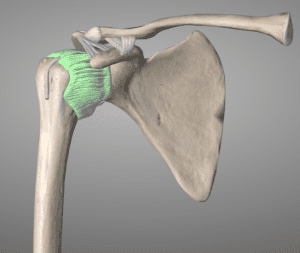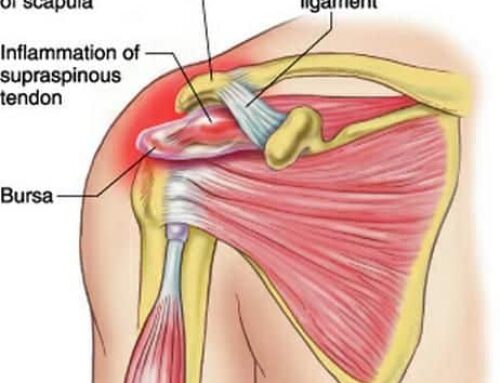How To Beat Frozen Shoulder

The one thing that everyone with frozen shoulder wants to know is…Can it be fixed?
One of the most frustrating things about having “frozen shoulder,” is that you feel like it’s something you’re just going to have to learn how to live with. At least, that’s what most people feel like after they’ve been searching for answers for months. Your search for answers has likely led to MRIs that say nothing. Your doctor tells you they don’t know why it happened, and only that it’s a 2 year process to hopefully resolve.
Your research for solutions may have described “manipulations”. But those just sound painful, and all the while you’re frustrated by your arm that just seems to be becoming useless. Many people try injections. These can take the pain away for a while, but unfortunately oftentimes do not last and do nothing to improve the function.
Has any of this happened to you?
If it has, you’re likely skeptical about the title of this article “How To Beat Frozen Shoulder.” You should be. There are not many people who can claim to be able to fix it, but I’m about to tell you how we get shoulders back to 90-95% function within just a couple of months.
What exactly is “frozen shoulder”?
Frozen shoulder is a condition in which the capsule (highlighted in green) surrounding the shoulder joint (glenohumeral joint) becomes stiff and rigid. This results in decreased mobility, and a lot of shoulder pain. The muscles around the shoulder have to work harder to move the joint, so they too become irritated. This muscular irritation can lead to additional tendinitis.

Image: Essential Anatomy Version 5.0.5
Frozen shoulder is classified in 4 stages.
- Stage 1: Painful and Freezing. The shoulder is painful, and range of motion gets less and less.
- Stage 2: Painful and Froze. The shoulder is still painful, but the loss of motion has slowed.
- Stage 3: Non Painful and Frozen. It’s no longer painful, but it’s still definitely stuck.
- Stage 4: Thawing. The shoulder regains much of the mobility that it lost, and is much less painful.
This entire process is estimated to last about 2 years. What if you don’t have 2 years? That’s what we’ll discuss here.
How Can I Skip The 2 Year Wait?
First, you should know this. The shoulder isn’t keeping time. It doesn’t magically know when the 2 year mark hits and suddenly becomes your shoulder again. So if you’re 18 months in and thinking “I’ll just wait another 6 months”, keep in mind that this is an average. From what we’ve seen, the effects of “frozen shoulder” can last much longer, and people who rely on this spontaneous resolution still come up short of full recovery.
Second, understand that what we’re about to discuss is a method. It’s a process that we have used to reliably help people beat “frozen shoulder.” If you’re going to have a shot at beating “frozen shoulder,” you need a methodological approach. It’s not something you’re going to stretch your way out of. In fact, stretching is – in our opinion – a very painful way to try to solve “frozen shoulder,” and the results are poor.
What’s This ‘Method’ To Beat “Frozen Shoulder”?
Our method is surprisingly straight forward. You need 3 things to beat “frozen shoulder.” Range of motion, coordination, and strength. Let’s tackle each one individually.
Range of Motion
Range of motion is, quite simply, the amount of motion you have. This is why people think that stretching is the best way to improve it. They try to force the stiff capsule to stretch. The problem here is that you’re pulling on something that’s already painful and irritated. The body’s natural response to that is to tighten up. Sounds counter-productive, right? That’s because it is.
Stretching is for muscles, not for capsules. In “frozen shoulder”, your muscles are irritated and your capsule is stiff. You need the capsule to loosen up, but for that you need something called ‘joint mobilizations.’ This allows the capsule to be loosened up without undue muscle irritation and gets you ready for the second part: coordination.
If you aren’t so sure if you have “frozen shoulder,” and think that you just need some tips on mobility, be sure to check out Four Tips For Shoulder Pain – Mobility.
Coordination
Coordination refers to how your brain and muscles work together. It’s an important next step, and often missed or skipped entirely. When you successfully get more range of motion out of your capsule, you immediately need to initiate coordination exercises to keep this range of motion. If you don’t, the brain never recognizes the extra range of motion, and it simply keeps doing what it has been.
Said another way, your brain has been using your muscles with less range of motion, and this is now what it thinks is your “full range of motion.” Unless you teach it that you now have more range, it will continue using the shoulder in a shortened range. This will lead to the capsule getting stiff again.
Important Note: The first two steps are repeated over and over. Get some range, then improve your coordination. Typically, you will gain 20-30 degrees of motion in a single treatment and then keep 10-15 degrees between treatments. It’s quite simply a “2 steps forward and 1 step back situation.” Eventually your range is restored fully over a couple of months. Then you can begin the strengthening phase.
Strength
Most people skip the coordination phase and just think they will strengthen their way out of “frozen shoulder.” They force movement against a capsule that is still stiff, and this leads to constant irritation.
When it comes to “frozen shoulder,” you should only strengthen through a pain free range of motion. This final stage of strengthening is what allows your shoulder to return to its normal self. Once you’re at this phase, it’s a great idea to check out our 4-Great Exercises For Shoulder Health article.
Conclusion
This is the method that we use to reliably help people beat “frozen shoulder.” It works at all stages of the condition.
Are You Or Someone You Know Struggling With “Frozen Shoulder”?
If so, and you’re looking for a potential solution for your problem, we are accepting applications for potential clients at our clinic, “The Doctors of Physical Therapy” in Scottsdale.
In order to see if we can help you, and also to determine if we are a good fit for each other, apply for one of our free 30 minute “Discovery Visit.”
These visits are limited, and will only be given to qualified candidates who have a strong desire to fix their frozen shoulder. We will have an honest discussion about your health and help you determine if we can help you.
Because these visits are limited, if you are someone who is looking for a “quick fix” or “overnight solution”, you need not apply.
But if you ARE someone who is willing to take an active role in your recovery and want nothing more than to recapture an active healthy lifestyle, then it is absolutely likely that we will be able to help you.
PS. If you want more information on who we help, and how we can help you overcome shoulder pain, click here.



